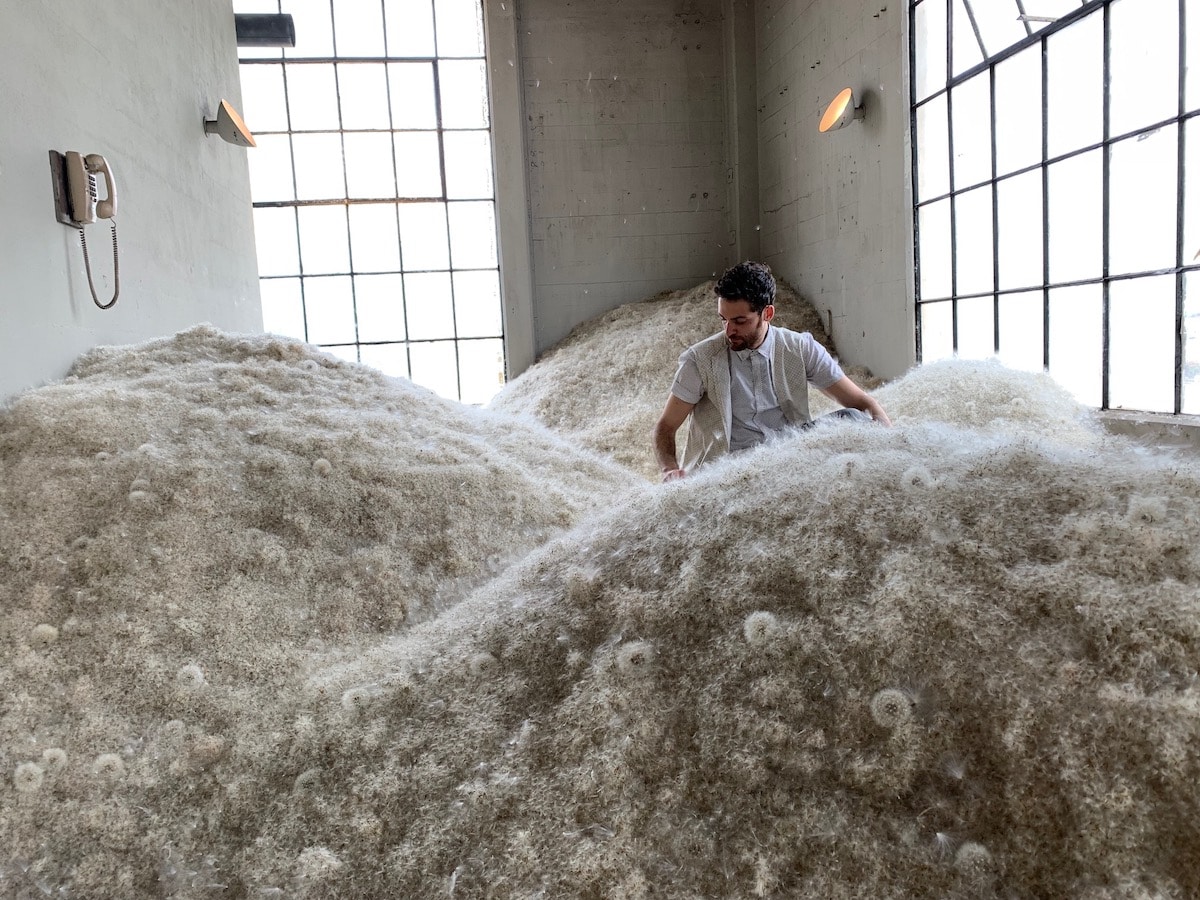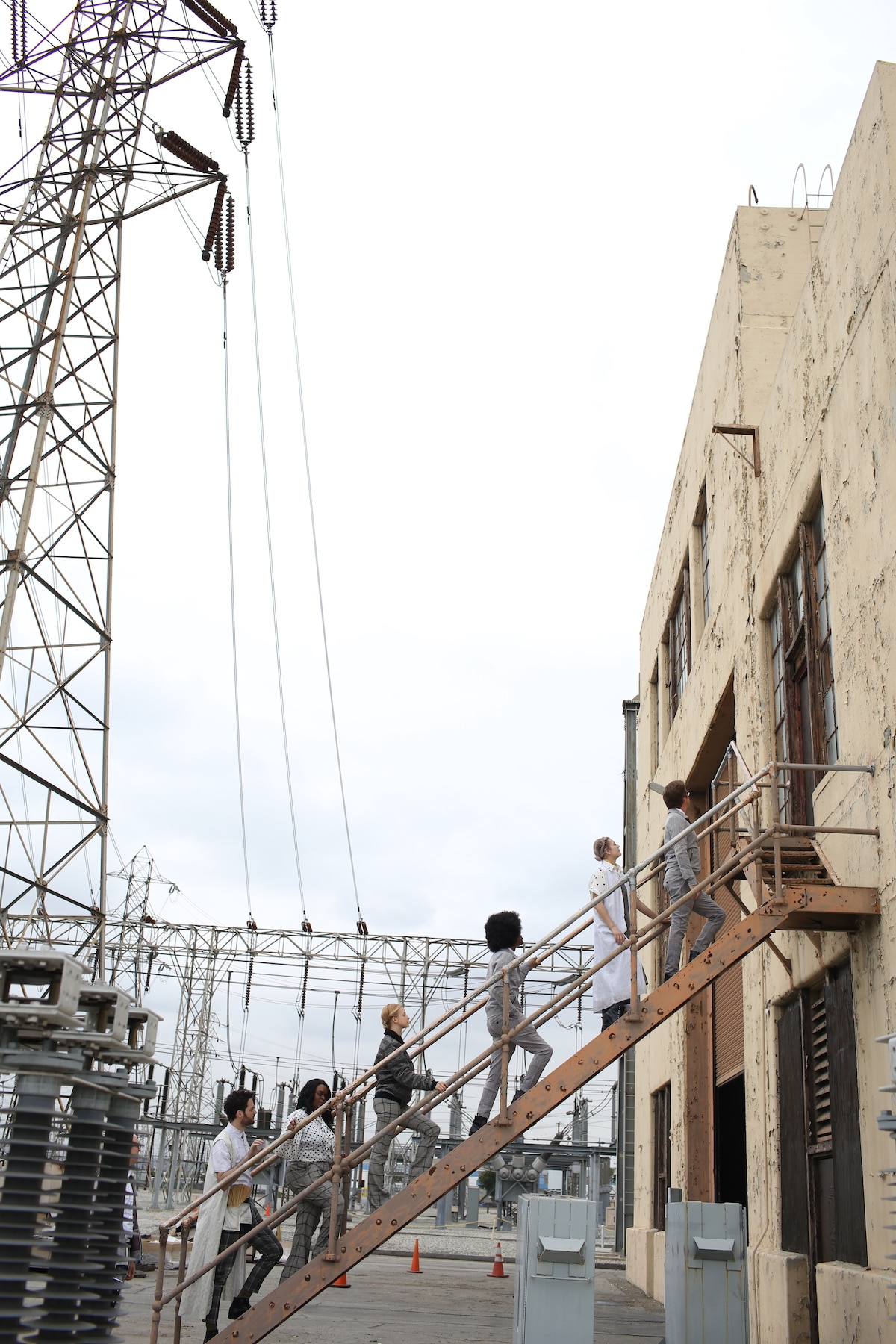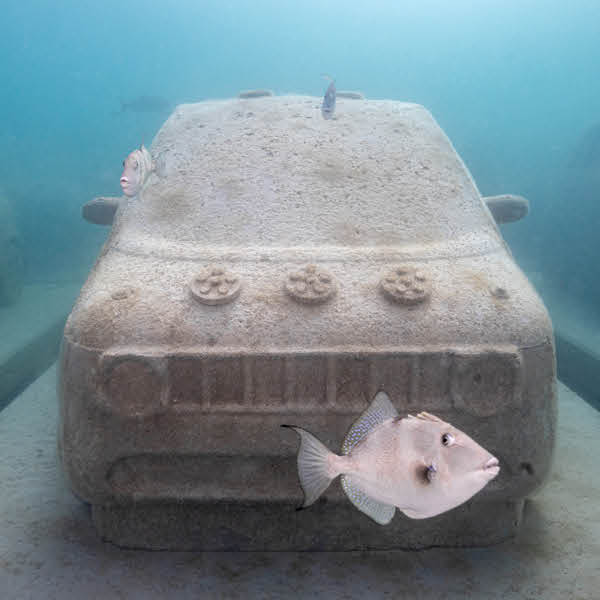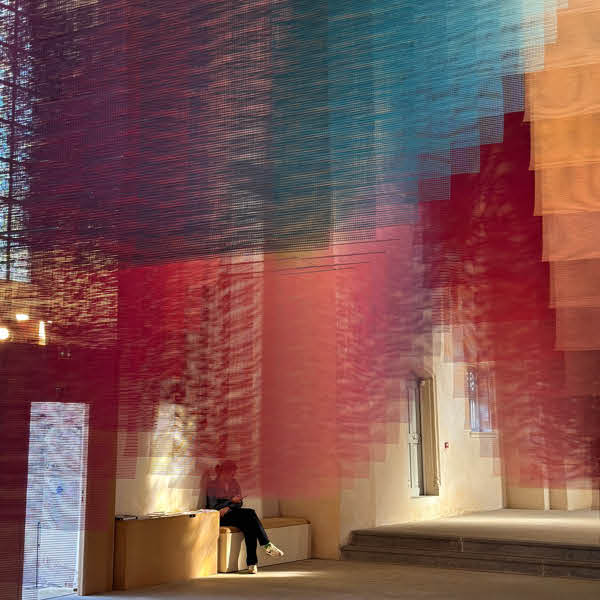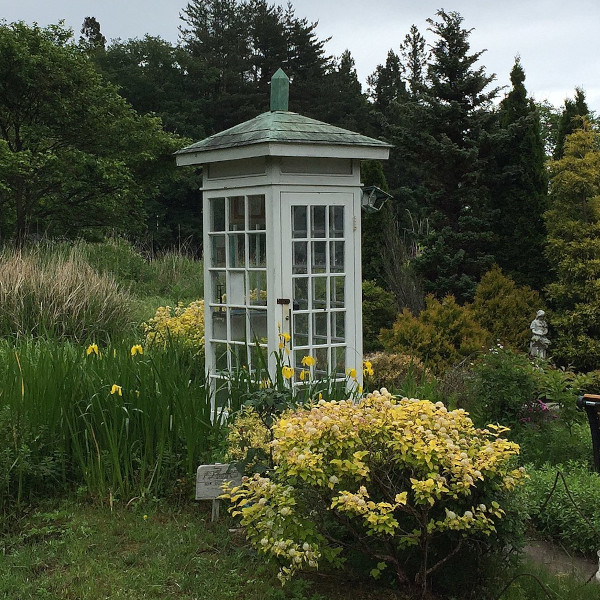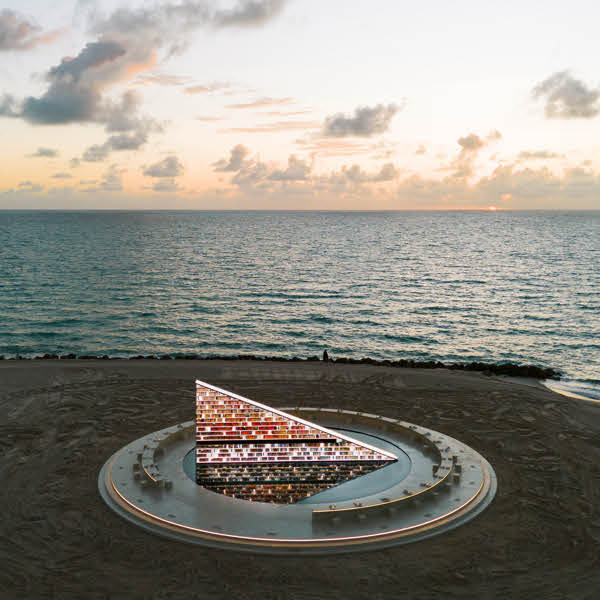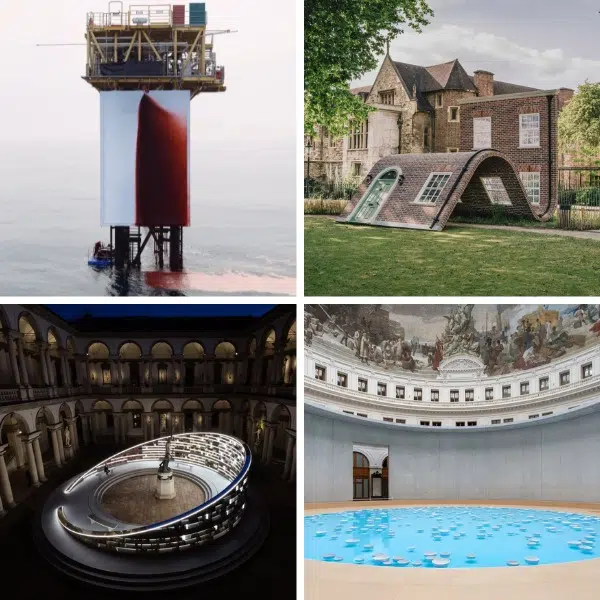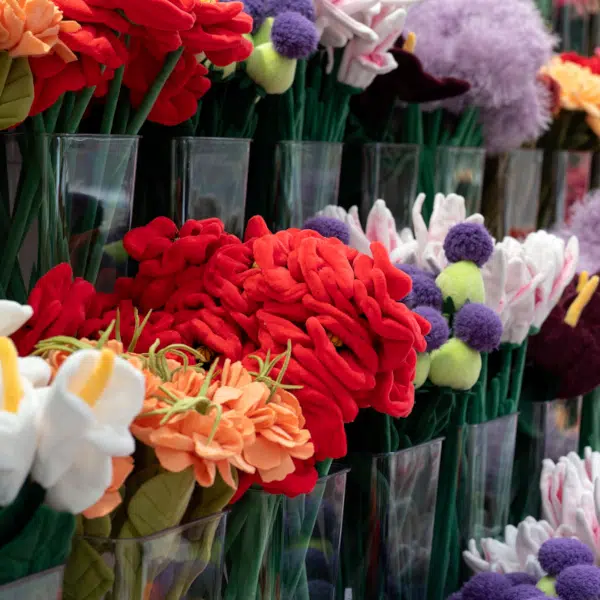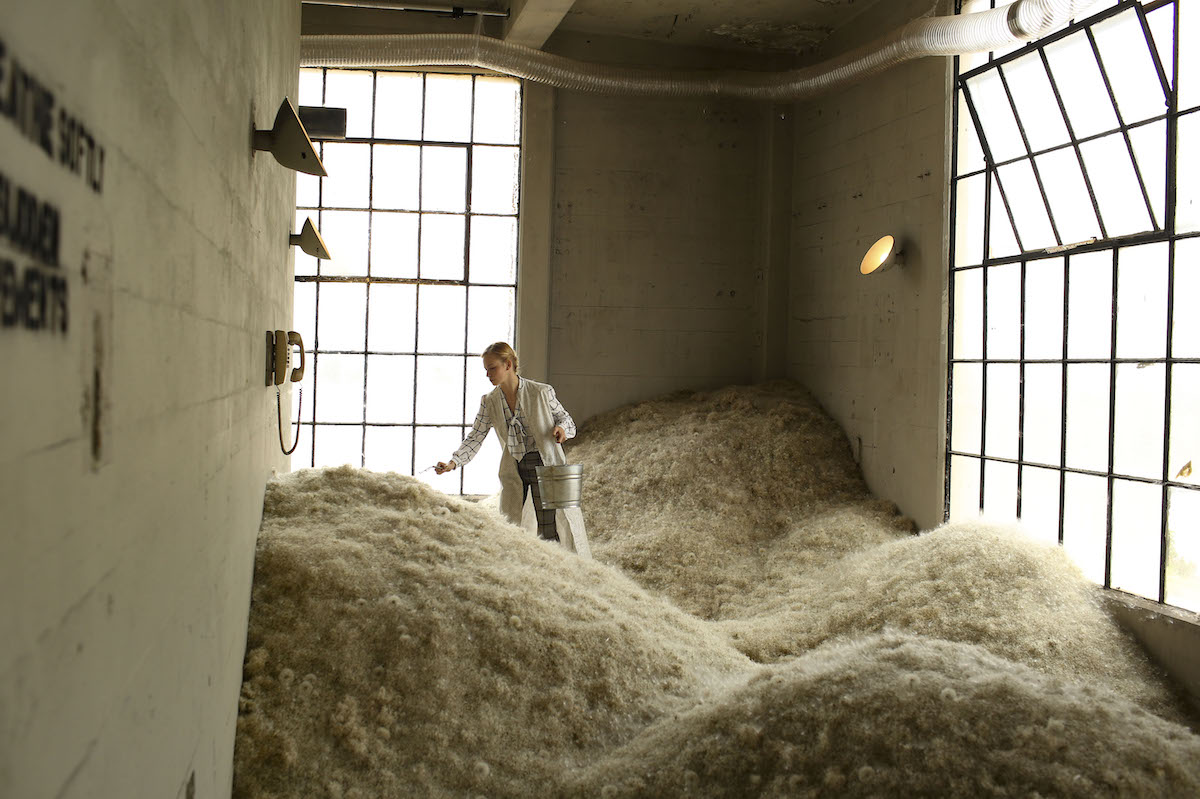
For just a few short days, a cavernous building at an electrical substation in California was transformed into a magical setting where dandelions sprouted and wishes were willed into the world. Thanks to the anonymous collective The Art Department, this wish processing facility came to fruition, allowing people to send their desires into the ether by blowing on a dandelion. Dandelions is just the latest in a long line of intriguing installation performances by the collective, who often work in Los Angeles' forgotten spaces.
After climbing a long set of stair up into the facility, visitors were asked questions to tease out their wishes. After the answers were analyzed, each person was given a dandelion that they could gently blow down one of two courses—slam dunk or long shot. Along the way, they could also view the abandoned dreams of others before them, left written on a board to twist in the wind.
Overseeing the proceedings was the Department of Small Things That Float, whose employees filled the building to ensure everything worked smoothly. Part performance, part installation, Dandelions was a masterful use of space, demonstrating that these often neglected edifices make the perfect blank canvas for creative minds.
We had a chance to exchange words with The Art Department about their creative process, the power of working as a collective, and how Dandelions came to fruition. Read on for My Modern Met’s exclusive interview.
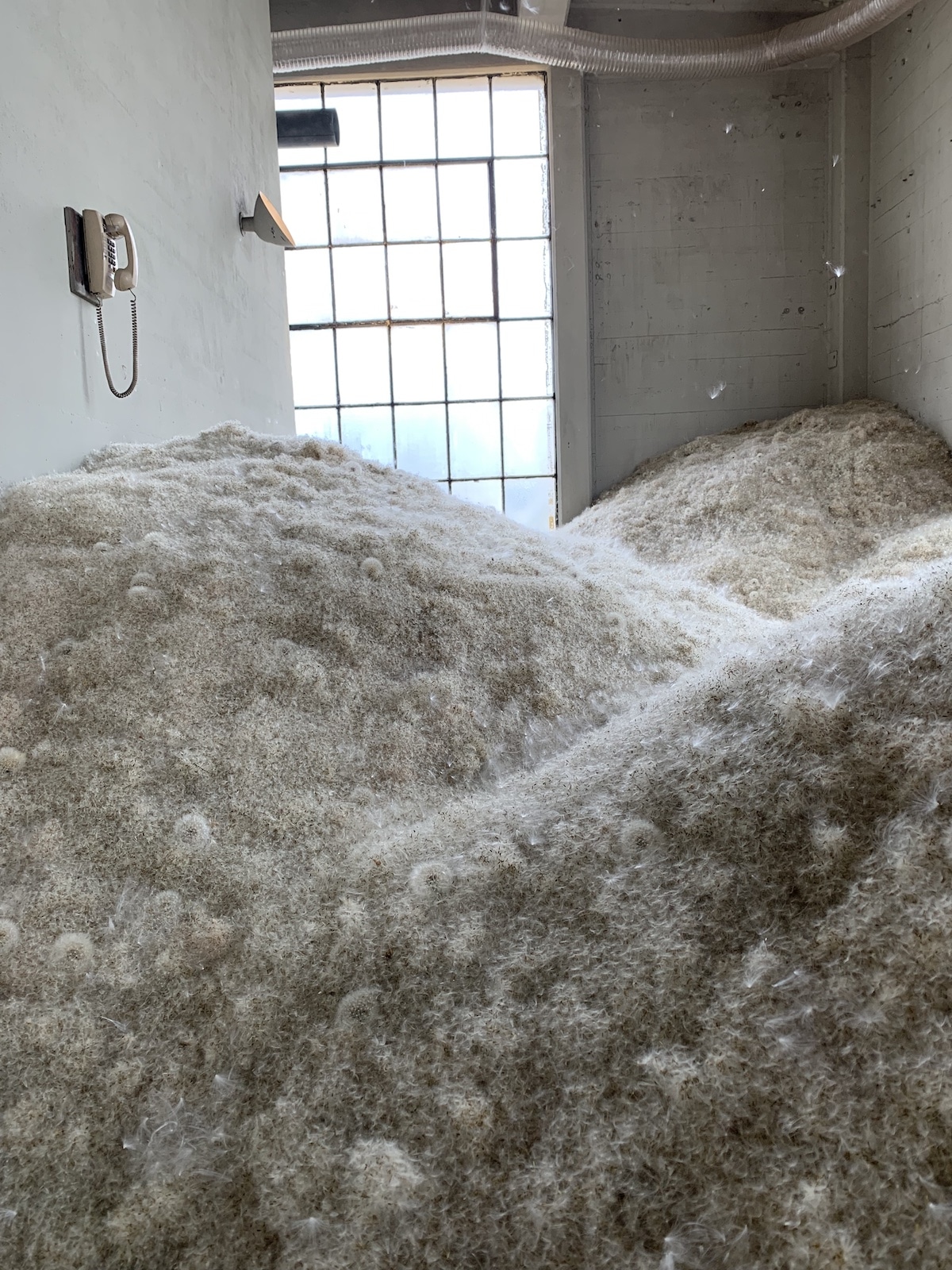
How did you begin collaborating?
We first met in 2007 at a midnight bike ride in Hollywood and hit it off around our shared fascination with Los Angeles and its workings. Our curiosity about the city led us to tour sites as varied as the Hyperion Water Treatment Plant, the quarries of Irwindale, and Power Plant #1; through research and conversations with all kinds of experts; occasional map-making; early morning swims at the Glassell Park pool; compiling lists of LA wonders; walking across town on Pico, Verdugo, or Figueroa; running for miles in Griffith Park; and dreaming up ridiculous schemes.
A few years ago, we decided to experiment with happenings around the city, as we looked to keep our love affair with the city alive. We held a high tea on a traffic island east of downtown. We made a vending machine that traded in scents inspired by Los Angeles. Then we snuck a teahouse into Griffith Park.
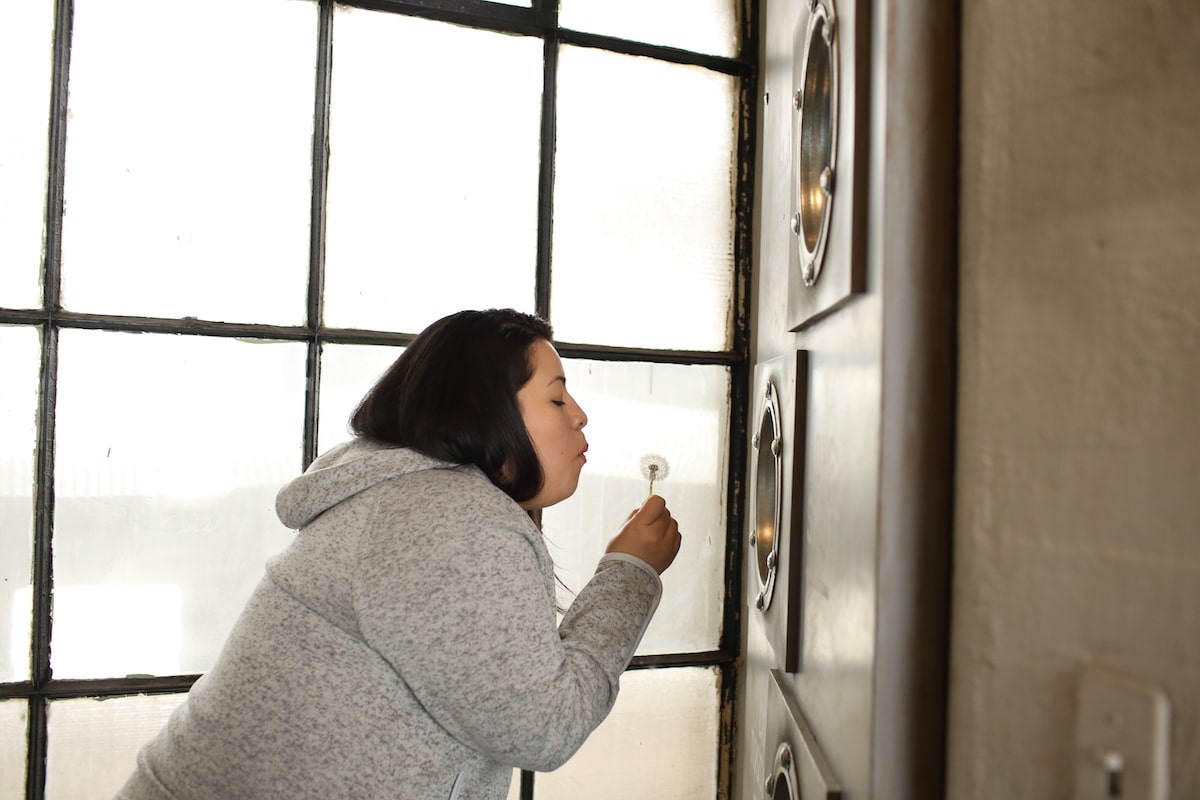
How do you feel that working as a collective, rather than individually, has strengthened your art?
We sometimes find ourselves arguing on fire escapes. We feel like there’s something productive and exciting to be found in trying things we couldn’t—or wouldn’t—do on our own. We have a range of backgrounds: performance, design, woodworking, architecture, cultural history, and, of course, bring different perspectives and desires to each project.
In Dandelions, for example, one of us had a really clear vision that the factory needed to be busy. We couldn’t all see it, so we kept playing with it, we kept working with our improvisers, the factory kept evolving as our performers interacted with our audiences and suddenly, it became clear that it was meant to be this busy hive-like wish factory.
We’ve been working together long enough to trust each other—so even when one of us can’t see another’s vision, we know it’s worth working with the concept until the piece reveals itself to us. Starting with three (often divergent) perspectives leaves us more open to change and to unexpected possibilities with each installation. The work evolves so much once it opens to the public; Angelenos bring it to life and push it in new directions that often surprise us.
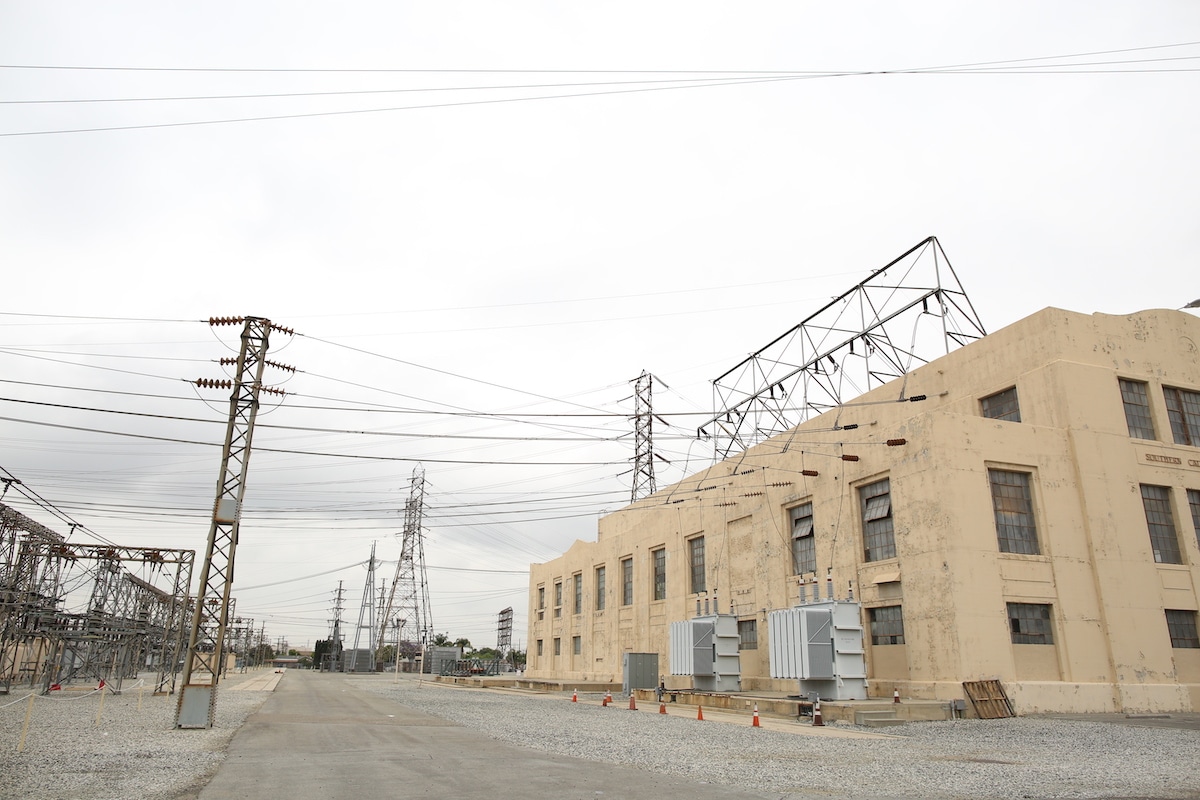
How did the chance to work at the Laguna location for Dandelions come about?
One of our favorite pastimes is touring industrial and infrastructural sites in Los Angeles. After visiting Power Plant #1 and a few other power plants, we came upon this substation in Commerce, and were struck by the cavernous spaces and huge banks of windows, with light pouring through them. We fell in love with this substation and imagined it full of floating seeds. The Laguna site was our co-conspirator.
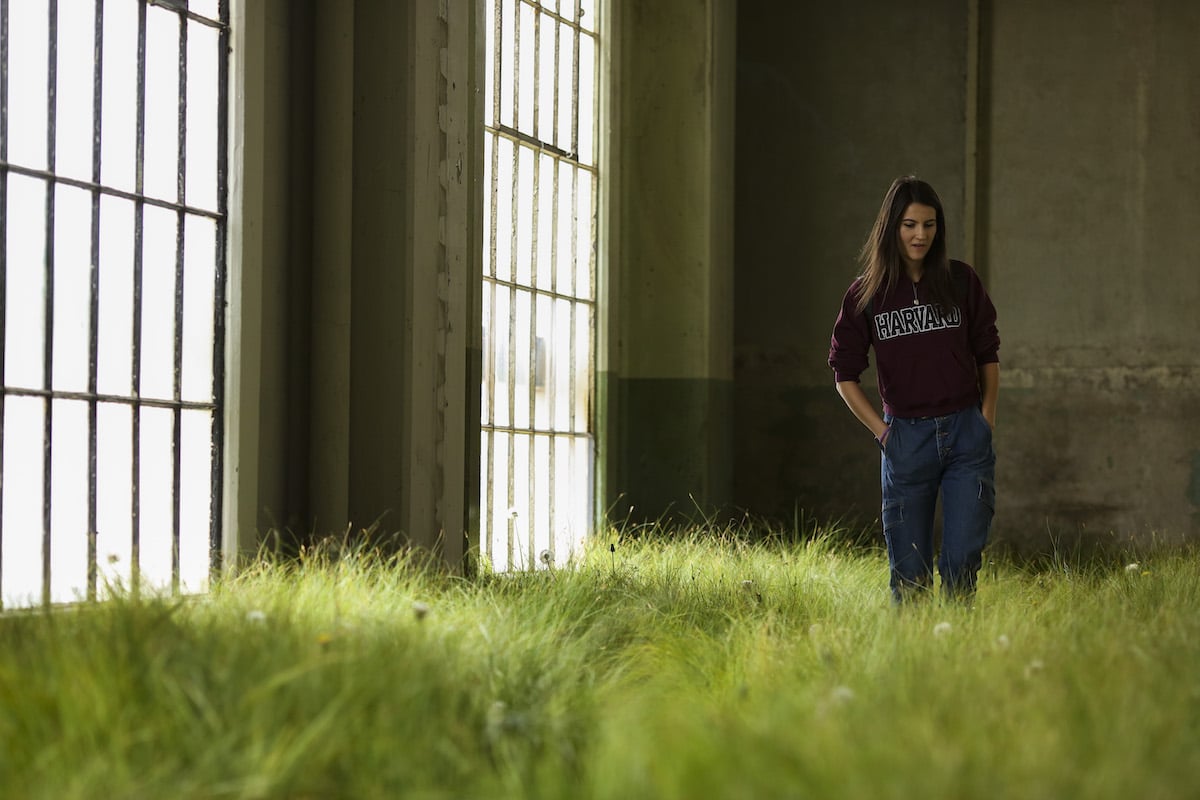
What was it about the space that made it seem like the perfect fit for this installation?
We have always been interested in juxtaposition. Heavy industrial infrastructure held up against the lightest, most ephemeral thing. At the same time, we are interested in imagined realities: What if these industrial complexes were dedicated to the sorting and distribution of desires?

These types of installations always have a lot of behind the scenes preparations. Can you share a bit about the creative process and what the most challenging aspect of putting together the show was?
We spent two years tracking and mapping neglected lots and street medians in southern California, on the lookout for dandelion seeds. Finding 100,000 dandelions in seed at the same time was definitely the most challenging and nerve-wracking part of the project.
Some of the most rewarding behind-the-scenes aspects of these projects are all of the collaborations required with experts from various fields. For Dandelions, we consulted with meadow experts, native plant gardeners, landscapers, city mowers, public works departments, butterfly tenders at the Natural History Museum, air flow mechanics, historians of electrical companies, and electrical substation workers.
We find it fascinating (and, at times, maddening) to negotiate with cities, and bureaucracies—trying to convince them to let us do something that they don’t totally understand. This negotiation process is interesting to us because it reveals so much about what we consider to be acceptable ways to invest energy in our society. We see this permission-gaining process and the complex logistics, as well as the way the public interacts with the piece, as part of the work itself. The projects don’t usually fit neatly into understood categories or economies. There’s something intriguing to us about bringing together people from diverse fields, who would normally have no reason to collaborate, to work together on something that seems wildly unreasonable.

What does the word “wish” mean to you?
We try not to be too didactic about the definition of “wish.” For some, a wish is a prayer fulfilled by a higher power. For some, a wish is an aspiration imbued with rational optimism. For some, wishes represent unfulfilled longing. For us, in the Department of Small Things that Float on the Wind, wishes are a lot of hard work. We have a buzzing, understaffed bureaucracy working around the clock to efficiently route wishes to substations around the city.
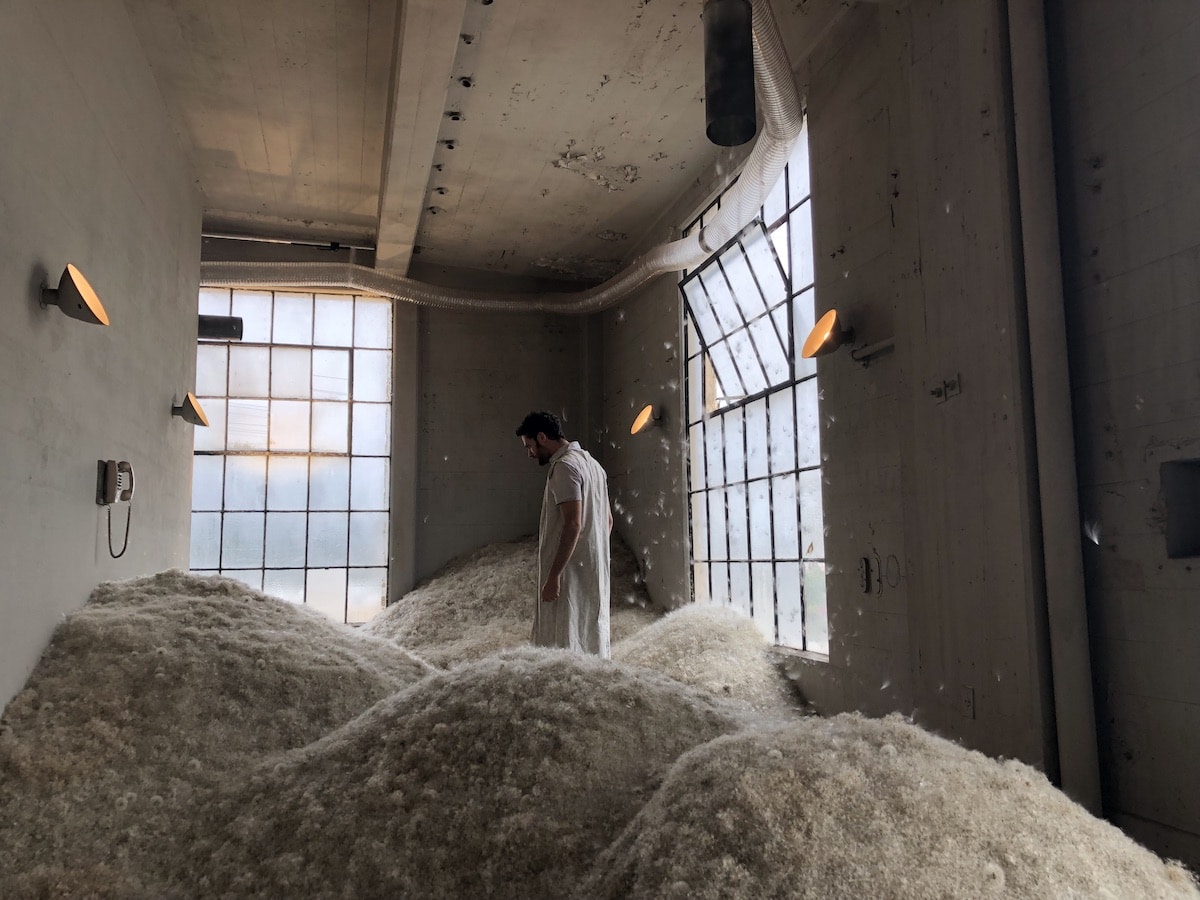
What type of experience were you trying to create for visitors?
Magical juxtaposition. And cognitive whiplash. You approach a massive, crackling electrical substation and a decaying industrial building that feels a bit dangerous. You then climb a rusting staircase and enter a lush, quiet indoor meadow with blooming dandelions and tall grasses. Around a corner, you enter into a frenetic bureaucracy with over-taxed workers, dot-matrix printers and anachronistic technology trying frantically to fulfill the most delicate and ephemeral thing: wishes blown from the puffs of dandelions. Along the way, you see pneumatic tubes and what look like giant turbines and living butterflies and the handwritten, abandoned wishes of people who have given up on their dreams.
We like to try to bring people into attentiveness by creating contrasts and subverting expectations.

What do you hope that people took away from the experience?
We hope visitors left with a better understanding of the complex processes and infrastructure that go into wish distribution and fulfillment in the SoCal wish network.

What's next?
We’re currently fantasizing about collaborating with wild squid. We’re not sure yet if they’re game to collaborate, but we’re hopeful.
